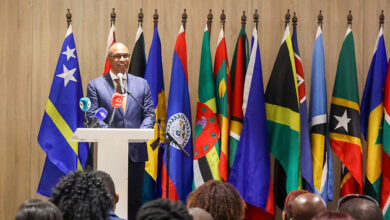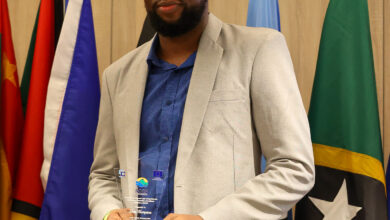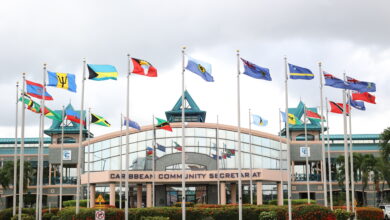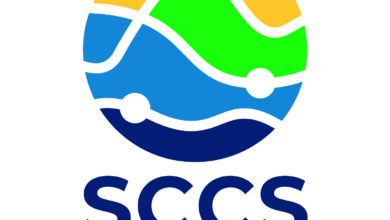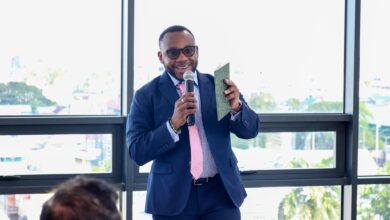(CARICOM Secretariat, Turkeyen, Greater Georgetown, Guyana) The story of Caribbean Integration captures the attention of many, as we reflect at this time on the road travelled, the milestones achieved and the opportunities missed. Journalists and social pundits act as conduits for sometimes emotive discussion as we pursue the search for solutions for survival and prosperity as a Caribbean Community. Such discourse usually harks back to the failed West Indies Federation and is punctuated with nostalgia by the early dreams for a united Caribbean Nation.
When we fast forward to today’s thrust for the CARICOM Single Market and Economy (CSME) and its varied challenges, the discussion is just as heated and the rhetoric stirred with each incremental step achieved towards unity. While it is easy to be critical of the pace of Community building, a few do take note of the efforts in creating the institutions and regimes which give life to this Caribbean movement through the Revised Treaty of Chaguaramas. One such institution is the CARICOM Development Fund (CDF), which, even in its fledgling status, forms a critical part of this Region’s design for engaging equitably with each other. The idea for the Fund is borrowed substantially from a similar mechanism successfully employed by the European Union (EU) in helping to bring certain of its member states – Ireland, Spain, Portugal and Greece – up to a certain economic level to assist them to effectively participate and benefit from the integration process.
The CDF, its objectives and beginnings
The CDF, was established under Article 158 of the Revised Treaty of Chaguaramas “for the purpose of providing financial or technical assistance to disadvantaged countries, regions and sectors.” It is the centre-piece of a regime to address the disparities among the Member States of the Community which may result from the implementation of the CSME. The signing of the Agreement Relating to the Operations of the Fund in July 2008, followed years of negotiations by CARICOM Member States regarding the principles, size and structure of a regional development fund. There was a sense of achievement when the Agreement was finally signed and technicians employed by the CDF got down to the task of making the mechanism operational.
In an interview, CDF Chief Executive Officer Ambassador Lorne McDonnough said “…The CDF start-up team was always confident it would meet the projected launch date…” Despite this confidence he admitted that “…along the way there were always the glitches and frustrating delays that called for an extra dose of perseverance as well as the need to step back and revisit the problem with a fresh resolve”. Ambassador McDonnough noted that heightened expectations and the desire to see the CDF operational in the shortest possible time, meant that Member States sometimes underestimated the work which had to be done to make the CDF ready for full operations.
Notwithstanding all the challenges, on 24 August 2009, in keeping with expectations, the CDF officially opened its doors. This was achieved after nine months of feverish effort by the start-up staff to put systems in place to allow for the receipt of requests for loans and grants.
The Start-up
The CDF, as established in the Agreement, has its own legal identity but is linked to CARICOM through several Ministerial Councils. The CDF is governed by its own corporate board and is managed by the CEO. Ambassador McDonnough assumed the post of CEO in November 2008 joining Ms. Fay Housty, now Senior Advisor, Corporate Governance and Development and Mr. Lenox Forte, now Manager, Corporate Development and Programming. These two officers were seconded from the CARICOM Secretariat.
The CDF began its existence from three temporary offices within CARICOM’s CSME Unit in the Tom Adams Financial Centre, Bridgetown, Barbados. The initial team spent the first three months looking for alternative office space, preparing the work plan and budget, seeking funding for the preparation of its governance rules and procedures in addition to beginning the process of recruiting the core executive and administrative staff.
Staff members recount that those months were as difficult, frustrating and interesting as one would expect with any embryonic organisation. During this time staff brought their computers from home and used personal cell phones and multi-tasked to get the Office established. With several ten to twelve hour days, colleagues buckled down to the tasks of even assembling office furniture with the realisation that the job had to be done.
The CDF moved into its current temporary office in the renovated Old Town Hall Building in Bridgetown at the end of January. This space was provided by the Government of Barbados for which the Organisation is grateful. It continues to work with the Government of Barbados on acquiring its more permanent premises which it hopes to occupy by the middle of 2010.
Staffing
The provision of offices allowed the Organisation to enhance its recruitment process. In February, an Executive Assistant, Ms. Angela Parris was appointed and in April, the Legal Counsel and Board Secretary Mr. Arden Warner assumed duty. The Director of the Regional Development Division, Dr Deryck Brown, and the Director of the Social and Cohesion Fund, Mr. St. Bernard Sebastian, came on board in July and August respectively. In October, Mr. Wayne Vitalis, the Financial Controller joined the team to complete a core staff of eight professionals. In keeping with the commitment to keep staff costs at minimum, additional skills will be outsourced as needed.
Capitalisation of the Fund
All Member States are required to contribute to the Capital of the Fund on the basis of a Formula agreed on by the CARICOM Heads of Government. The CDF is currently capitalised at US$79.9 million. It is envisaged that by the end of the year Member States would have contributed approximately US$87 million. The CDF also has the remit to raise a further US$130 million from donors and friendly states. The CEO was recently quoted as saying that “...The crisis in world financial markets has made this more challenging…” and asserting that “...the CDF will aggressively go after the target set. We are working very closely with the Chairman of the Resource Mobilisation Task Force, Prime Minister of Barbados, the Honourable David Thompson. That Task Force was established by the Conference of Heads of Government, and these efforts will be redoubled in the coming months now that the CDF has commenced full operations…”
The CDF has also benefited from technical assistance grants of US$149,000 from the Caribbean Development Bank (CDB) and €834,000 from the European Union (EU) Institutional Support Facility in addition to a recent contribution of €300,000 signalling the start of a closer relationship between the Government of Finland and CARICOM. The Government of Turkey also provided support to the countries of the Organisation of Eastern Caribbean States (OECS) to assist them in making their contribution to the CDF’s capital fund.
Beneficiaries of the Fund
Whilst all Members of the CSME contributing to the CDF are eligible to receive financial and technical assistance support from the Fund, only the designated disadvantaged countries – the LDCs (OECS and Belize) and Guyana (as a Highly Indebted Poor Country) will have access to resources during the first contribution cycle. To identify the needs of the eligible Member States and to inform the CDF Board as it signed off on governance rules and regulations, needs assessment consultations were undertaken to the LDCs and Guyana.
Informed by these consultations and consistent with its remit to address disparities resulting from the implementation of the CSME, the CDF will focus on disbursing concessionary loans and grants that address objectives related to the implementation of the CSME, preferably small-to-medium size projects of a short implementation period. The details of the criteria for project selection can be found in the CDF Appraisal and Disbursement guidelines on www.csmeonline.org .
In an attempt to guarantee the sustainability of the CDF capital fund, the size of direct loans will range between US$0.5million and US$ 4million; the minimum size of grants will be US$20,000. In each Contribution Cycle, the Board will earmark up to US$10 million to finance private sector projects that are regional or sub-regional in scope. The CDF will also look to work with its development partners in leveraging the technical assistance it can provide.
The Next Stage
Staff Members of the CDF are now looking to the next stage of its operations, one which will see the institution having a direct impact on alleviating the effects of whatever disparities and disadvantages arise out of the operations of the CSME, all in an effort to make a success of this Community’s flagship enterprise.

